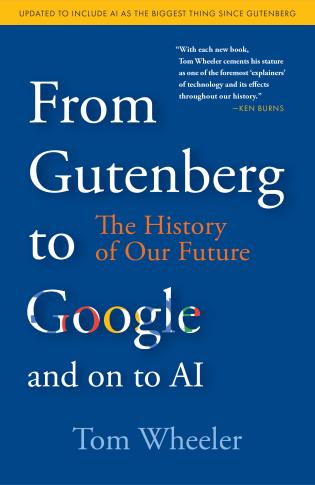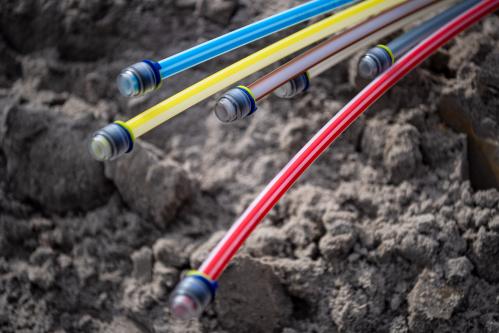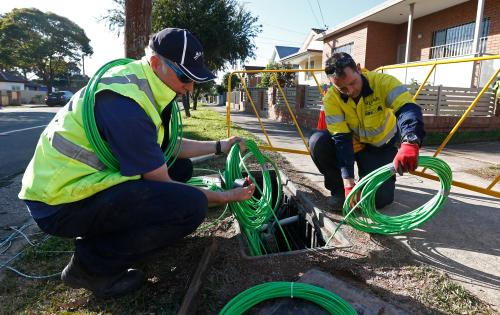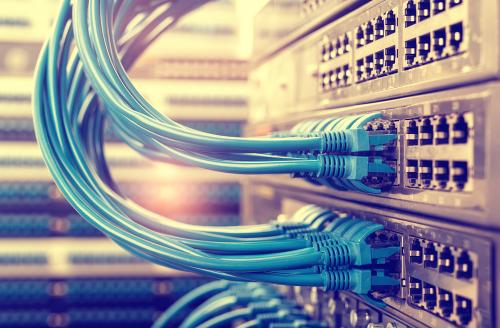One of the lessons of COVID-19 was the need for speed in digital broadband connections. As more and more members of a household were online simultaneously doing schoolwork or working from home, the need for bandwidth increased. An August 2020 survey found that almost a quarter of broadband households planned to upgrade to higher speeds. It is for these, and many other reasons, that the broadband infrastructure program being considered by Congress must prioritize spending public funds for high-speed service, not simply good-enough service.
At a time when commercial broadband companies are investing private money in upgrading their networks to mega-high-speed broadband deployment, it is foolhardy for the government to spend public money for second class service. At a time when the nation is finally moving beyond talking about the digital divide to actually doing something about the problem, it is illogical to spend the taxpayers’ dollars for something that will only open the possibility of a “not good enough divide” as demand continues to rise.
Currently, an intense lobbying campaign is being conducted, especially by wireless and satellite network providers, to define digital down so that they may be able to sup at the federal funding trough. These companies want federal funds for their for-profit services, even if the services are slower in speed than what the market has demonstrated is necessary for broadband. A recent private report by J.P. Morgan found that 74 percent of Americans with access to broadband pay for speeds of at least 100 Mbps. By 2025, the report forecasts, that number will grow to 90 percent. If at least 100 Mbps is what the market is demanding, why would the federal government spend billions to build less than that in unserved areas? If almost a quarter of consumers are asking their providers for faster service, why should the government support something slow?
Newly introduced legislation by a bipartisan group of senators has recognized this reality. Their proposal should be an outline for the broadband initiative. Senators Michael Bennett (D-CO), Angus King (I-ME), and Rob Portman (R-OH) introduced the BRIDGE Act which defines broadband as a symmetrical service of 100 Mbps both into and out of the home. This compares to the current no longer adequate broadband definition established by the FCC in 2015 of 25 Mbps down to the home and 3 Mbps up out of the home.
A key component of the legislation is that the service to be supported must be symmetrical; that is, the upload from the home must be equally as fast as the download. The wisdom of that was explained by Pascal Desroches, AT&T Senior Vice President and CFO: “Over time, we think the demands will only grow, in particular, demand for symmetrical speed.” By stipulating the deliverable must be 100 Mbps symmetrical, the legislation leaves the door open should other technology come along. But the reality today is that only fiber can provide high-speed 100 Mbps in both directions.
If there is anything we have learned from the history of broadband, it is that what may be adequate for today is not adequate for tomorrow. The buzzword for this is “future-proof” broadband. The lesson of the internet has always been increasing demand. That the network companies are building future-proof fiber and hybrid fiber-coax networks with the capacity to expand speeds as necessary should be the model for the federal program.
What broadband speeds the marketplace is working toward
“AT&T Favoring Fiber Versus Fixed Wireless Access,” a recent trade publication headlined. The company has embarked on a plan to upgrade to fiber and expand the footprint of its old networks so that they will be “multi-gig enabled.” If AT&T is spending billions of private monies for multi-gigabit service, why should the federal government consider spending one penny of taxpayer monies for anything less?
As AT&T’s Desroches explained, “In a world where you’re going to have increased demand from gaming, increased demand from online education, increased demand from telehealth services and remote work, I’m just not sure that the fixed wireless is going to satisfy consumers that are using more and more connectivity in their day-to-day lives.”
Cable operators, the largest providers of high-speed broadband, report that 80 percent of American homes already have gigabit speed available into the home with tens of megabit speed out [a gigabit (Gbps) is 10-times faster than 100 megabits (Mbps)]. Cable companies have announced their networks can be upgraded to provide symmetrical gigabit service. The next generation of cable technology (DOCSIS 4.0) supports 10 Gbps down and 6 Gbps up.
So, one must ask, if the companies are spending their money for mega-fast broadband, why would the government even consider anything less?
Now is not the time to define digital down.
AT&T is a general, unrestricted donor to the Brookings Institution. The findings, interpretations, and conclusions posted in this piece are solely those of the author and not influenced by any donation.
The Brookings Institution is committed to quality, independence, and impact.
We are supported by a diverse array of funders. In line with our values and policies, each Brookings publication represents the sole views of its author(s).










Commentary
Don’t replace the digital divide with the “not good enough divide”
June 21, 2021